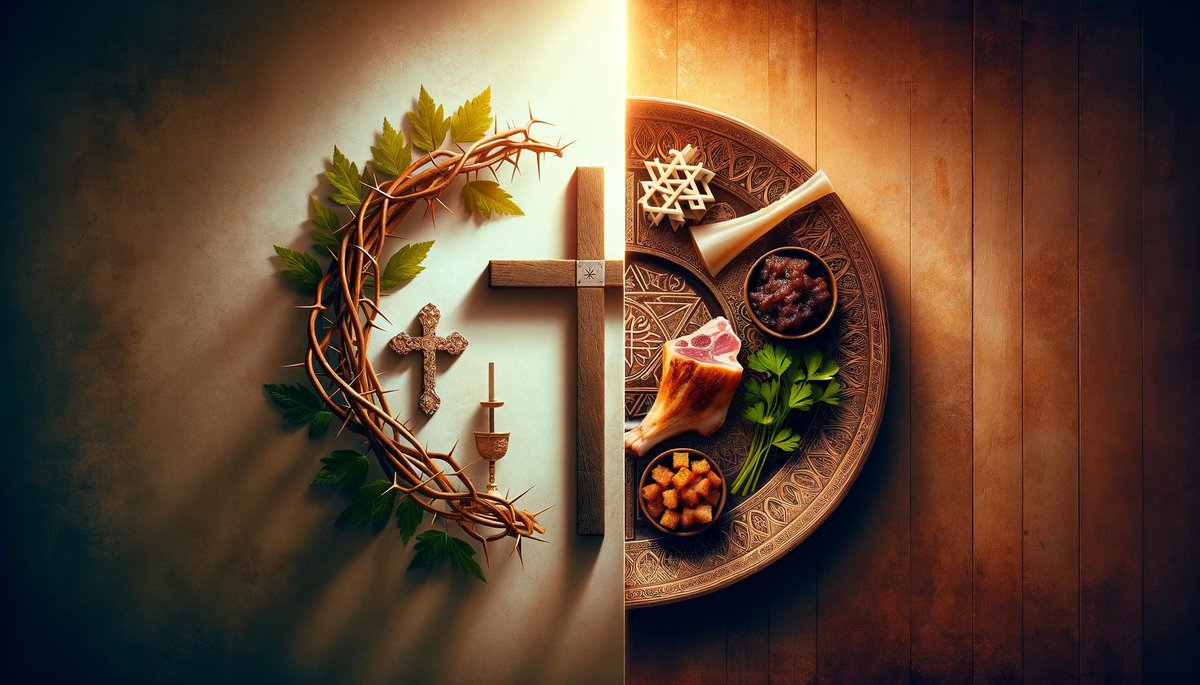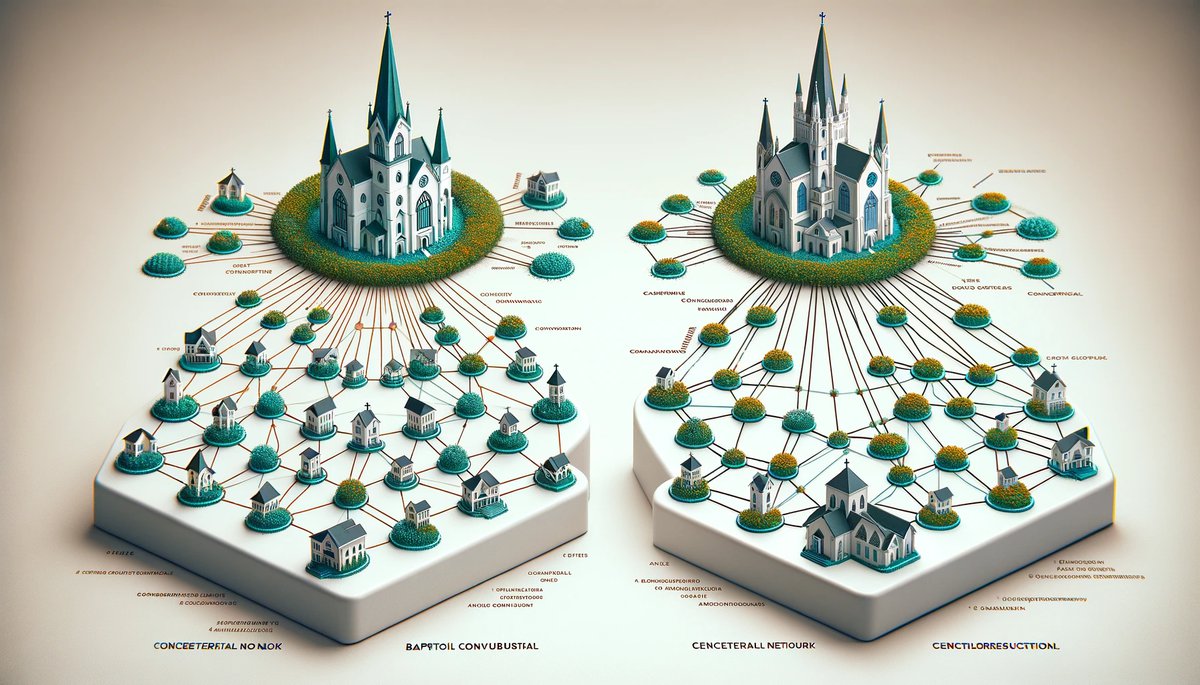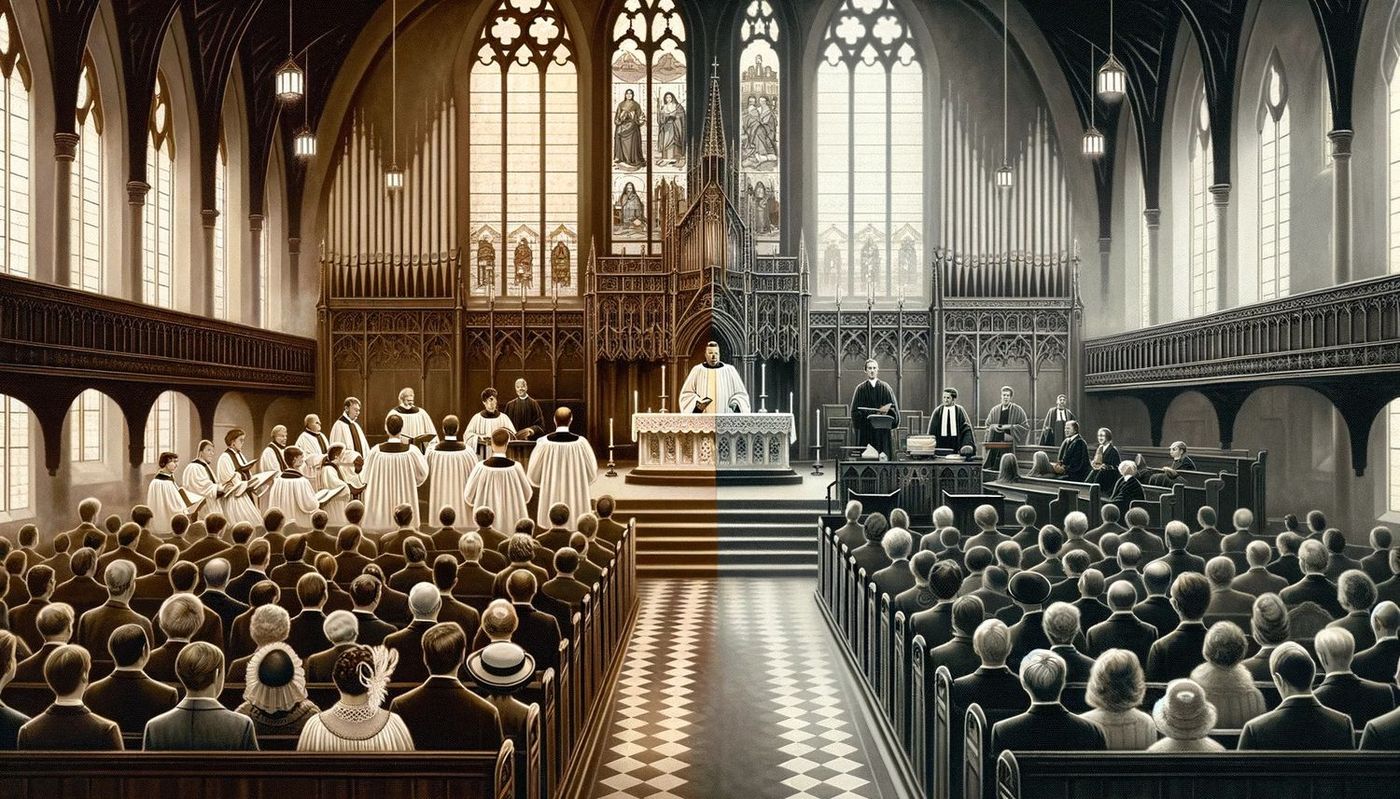Home>Special Themes>What Is The Difference Between Lent And Passover


Special Themes
What Is The Difference Between Lent And Passover
Published: February 27, 2024
Jason DeRose, Managing Editor at Christian.net, uses his expertise in religion and journalism to deepen understanding of faith's societal impacts. His editorial leadership, coupled with a strong academic background, enriches the platform’s diverse content, earning him recognition in both journalism and religious circles.
Learn about the key distinctions between Lent and Passover in this insightful guide. Explore the significance of these special themes in religious traditions.
(Many of the links in this article redirect to a specific reviewed product. Your purchase of these products through affiliate links helps to generate commission for Christian.net, at no extra cost. Learn more)
Table of Contents
Introduction
What is the difference between Lent and Passover? Lent and Passover are both significant religious observances in Christianity and Judaism, respectively. While both are periods of spiritual reflection and observance, they have distinct origins, practices, and symbolism. In this article, we will explore the origins of Lent and Passover, how they are observed, their symbolism, and ultimately, the key differences between the two religious traditions. So, let's dive in and uncover the unique aspects of Lent and Passover!
Origins of Lent
-
Early Christian Practices: The origins of Lent can be traced back to the early Christian church, where it was initially observed as a period of preparation for Easter. The word "Lent" itself comes from the Old English word "lencten," which means spring. This reflects the timing of Lent, which occurs in the spring season.
-
Historical Development: Over time, the observance of Lent evolved, with the duration of the season and specific practices varying among different Christian denominations. The Council of Nicaea in 325 AD played a significant role in standardizing the observance of Lent across the Christian church.
-
Forty Days of Preparation: The duration of Lent, which lasts for approximately forty days, is symbolic of the forty days that Jesus spent fasting in the wilderness. This period of preparation is seen as a time of self-examination, repentance, and spiritual discipline.
-
Fasting and Abstinence: Fasting and abstinence from certain foods are common practices during Lent. This is seen as a way to emulate the sacrifices made by Jesus and to focus on spiritual growth and reflection.
-
Liturgical Observance: Within the liturgical calendar of the Christian church, Lent begins on Ash Wednesday and concludes on Holy Saturday, the day before Easter Sunday. This period includes the observance of significant events such as Palm Sunday, Maundy Thursday, and Good Friday, all leading up to the celebration of Easter.
-
Penitential Season: Lent is often referred to as a penitential season, emphasizing the themes of repentance, humility, and renewal. It is a time for believers to engage in prayer, acts of charity, and self-discipline as they prepare to commemorate the death and resurrection of Jesus Christ.
By understanding the origins of Lent, we gain insight into the historical and spiritual significance of this season within the Christian faith.
Origins of Passover
-
Biblical Account: The origins of Passover are deeply rooted in the biblical narrative of the Exodus, which recounts the liberation of the Israelites from slavery in ancient Egypt. According to the Book of Exodus, God commanded Moses to instruct the Israelites to mark their doorposts with the blood of a sacrificial lamb, ensuring that the angel of death would pass over their homes during the tenth plague inflicted upon the Egyptians.
-
Symbolism of Freedom: Passover, also known as Pesach in Hebrew, commemorates the Israelites’ deliverance from bondage and their journey to freedom. The festival serves as a powerful symbol of liberation, faith, and the enduring covenant between God and the Jewish people.
-
Historical Significance: The observance of Passover has been central to Jewish identity and faith for millennia, representing a foundational event in the collective memory of the Jewish people. The Exodus narrative and the rituals of Passover continue to resonate as a testament to God’s faithfulness and the resilience of the Jewish community.
-
Rituals and Traditions: The Passover Seder, a ceremonial meal and service, is a focal point of the observance. It includes the retelling of the Exodus story, the consumption of symbolic foods such as matzah (unleavened bread) and bitter herbs, and the recitation of prayers and blessings. The Seder is a time for families and communities to come together, reaffirming their connection to their heritage and to each other.
-
Continuity and Renewal: Passover is a time of spiritual renewal and rededication to the values of justice, compassion, and faith. The rituals and customs associated with Passover serve to reinforce the continuity of Jewish tradition across generations, fostering a sense of shared history and responsibility.
By delving into the origins of Passover, we gain a deeper appreciation for its enduring significance within the Jewish faith and its resonance as a testament to the enduring bond between God and the Jewish people.
Observance of Lent
-
Ash Wednesday: Lent commences with Ash Wednesday, a solemn day of reflection and repentance. It is customary for worshippers to receive a cross-shaped mark of ashes on their foreheads, symbolizing mortality and the need for forgiveness.
-
Fasting and Abstinence: One of the central aspects of Lenten observance is fasting and abstinence. Many Christians choose to abstain from certain foods, particularly meat, on Ash Wednesday and Fridays during Lent. This practice is a way of honoring the sacrifices of Jesus and focusing on spiritual discipline.
-
Prayer and Reflection: Lent is a time for intensified prayer and spiritual reflection. Many churches hold special services and prayer gatherings to support believers in their Lenten journey. It is a period for individuals to seek spiritual growth, deepen their relationship with God, and seek forgiveness for their shortcomings.
-
Acts of Charity: Engaging in acts of charity and service to others is another hallmark of Lenten observance. Many Christians use this season as an opportunity to give back to their communities, support those in need, and demonstrate compassion and generosity.
-
Lenten Devotions: Some Christians choose to incorporate specific devotional practices into their daily routines during Lent. This may include reading spiritual literature, participating in study groups, or engaging in acts of self-discipline to foster personal and spiritual growth.
-
Liturgical Observance: Within the liturgical calendar, Lent encompasses significant events such as Palm Sunday, commemorating Jesus' triumphal entry into Jerusalem, Maundy Thursday, recalling the Last Supper, and Good Friday, marking the crucifixion of Jesus. These observances lead up to the joyous celebration of Easter, the culmination of the Lenten season.
-
Spiritual Discipline: Lent serves as a period of spiritual discipline, inviting believers to examine their lives, confront their weaknesses, and seek reconciliation with God and others. It is a time to cultivate virtues such as humility, patience, and self-control, fostering a deeper understanding of the Christian faith.
By participating in the observance of Lent, Christians seek to emulate the example of Jesus, draw closer to God, and prepare their hearts for the celebration of Easter.
Observance of Passover
-
Seder Ritual: The centerpiece of Passover observance is the Seder, a ceremonial meal and service that takes place on the first two nights of the festival. The Seder is a time-honored tradition that involves the retelling of the Exodus story, using a book called the Haggadah. The Haggadah guides participants through the rituals, prayers, and symbolic foods, such as matzah (unleavened bread), maror (bitter herbs), and charoset (a sweet mixture representing the mortar used by the Israelite slaves). The Seder is a multi-sensory experience that engages participants in a journey through history, faith, and freedom.
-
Removal of Leaven: Prior to the commencement of Passover, Jewish households engage in a thorough cleaning of their homes to remove all traces of leavened products, known as chametz. This practice symbolizes the haste with which the Israelites left Egypt, as they did not have time for their bread to rise. The meticulous removal of leaven is a tangible expression of spiritual preparation and commitment to the observance of Passover.
-
Matzah Consumption: Throughout the duration of Passover, the consumption of leavened bread is prohibited, and matzah is eaten in its place. Matzah serves as a powerful symbol of humility, faith, and the haste with which the Israelites departed from Egypt. Its unleavened nature underscores the simplicity and sincerity of the Passover observance.
-
Community and Family Gatherings: Passover is a time for families and communities to come together, sharing in the rituals and traditions that have been passed down through generations. The Seder is a focal point for these gatherings, fostering a sense of unity, continuity, and shared identity. It is a time for storytelling, laughter, and the transmission of values and heritage from one generation to the next.
-
Spiritual Reflection and Gratitude: Passover provides an opportunity for spiritual reflection, gratitude, and rededication to the values of freedom and faith. The Exodus narrative serves as a reminder of the enduring presence of God in the lives of the Jewish people and the responsibility to uphold the principles of justice, compassion, and righteousness.
-
Continuity of Tradition: The observance of Passover reinforces the continuity of Jewish tradition and the enduring bond between God and the Jewish people. Through the rituals, prayers, and communal gatherings, Passover becomes a living testimony to the faith, resilience, and unity of the Jewish community.
-
Symbolism of Liberation: Passover is a celebration of liberation, both historical and spiritual. It serves as a reminder of the enduring quest for freedom, justice, and human dignity. The rituals and observances of Passover resonate as a testament to the indomitable spirit of the Jewish people and their unwavering commitment to their faith and heritage.
By engaging in the observance of Passover, Jewish individuals and communities reaffirm their connection to their history, their faith, and their enduring covenant with God.
Symbolism of Lent
-
Renewal and Rebirth: Lent symbolizes a period of spiritual renewal and rebirth. Just as spring brings forth new life and growth in the natural world, Lent offers believers an opportunity to renew their faith, reconcile with God, and experience a personal and spiritual rebirth.
-
Sacrifice and Self-Denial: The symbolism of sacrifice and self-denial during Lent reflects the ultimate sacrifice of Jesus Christ on the cross. By giving up certain indulgences or comforts, believers emulate the selflessness of Jesus and focus on the deeper, spiritual aspects of life.
-
Repentance and Forgiveness: Lent serves as a time for repentance and seeking forgiveness for past wrongs. The symbolism of ashes on Ash Wednesday signifies humility and the acknowledgment of human frailty, while the act of seeking forgiveness fosters spiritual growth and reconciliation.
-
Journey to Easter: The symbolism of Lent as a journey mirrors the forty days that Jesus spent in the wilderness, facing temptation and preparing for his ministry. Similarly, believers embark on a spiritual journey during Lent, confronting their own challenges and striving to draw closer to God.
-
Preparation for Easter: Lent symbolizes the preparation for the joyous celebration of Easter. Through prayer, fasting, and acts of charity, believers prepare their hearts to fully embrace the significance of Jesus' resurrection and the hope it brings to the world.
-
Spiritual Discipline and Growth: The symbolism of Lent underscores the importance of spiritual discipline and growth. By engaging in practices such as fasting, prayer, and almsgiving, believers cultivate virtues such as patience, humility, and compassion, fostering a deeper connection with their faith.
-
Embracing the Paschal Mystery: Lent invites believers to embrace the Paschal Mystery, which encompasses the suffering, death, and resurrection of Jesus Christ. The symbolism of Lent encourages believers to reflect on the profound meaning of these events and their transformative impact on humanity.
By embracing the symbolism of Lent, believers are called to embark on a profound spiritual journey, embracing sacrifice, renewal, and the hope of Easter.
Symbolism of Passover
-
Freedom and Liberation: Passover symbolizes the timeless quest for freedom and liberation. The Exodus narrative, at the heart of the Passover observance, serves as a powerful symbol of the enduring human yearning for freedom from oppression, tyranny, and injustice.
-
Covenant and Promise: Passover embodies the enduring covenant between God and the Jewish people. The rituals and traditions associated with Passover serve as a tangible expression of the unbreakable bond between God and His chosen people, reaffirming the promise of protection, guidance, and redemption.
-
Remembrance and Commemoration: Passover is a time of remembrance and commemoration, honoring the collective memory of the Jewish people. The retelling of the Exodus story during the Seder serves as a testament to the resilience, faith, and perseverance of the Jewish community throughout history.
-
Renewal and Hope: Passover symbolizes spiritual renewal and the enduring hope for a brighter future. The rituals of Passover, including the removal of leaven and the consumption of matzah, signify the commitment to humility, faith, and the anticipation of a renewed relationship with God.
-
Unity and Continuity: Passover fosters a sense of unity and continuity within the Jewish community. The communal gatherings for the Seder, the sharing of traditions across generations, and the transmission of values and heritage underscore the enduring strength and interconnectedness of the Jewish people.
-
Justice and Compassion: Passover embodies the principles of justice, compassion, and righteousness. The Exodus narrative serves as a reminder of the enduring quest for freedom and the responsibility to uphold the values of justice, empathy, and solidarity with the oppressed.
-
Promise of Redemption: Passover symbolizes the promise of redemption and deliverance. The rituals and observances of Passover resonate as a testament to the enduring faith in God's providence and the belief in the ultimate redemption of humanity.
By embracing the symbolism of Passover, Jewish individuals and communities reaffirm their connection to their history, their faith, and their enduring covenant with God.
Comparison of Lent and Passover
-
Historical Origins:
- Lent: Originating from early Christian practices, Lent is a period of preparation for Easter, symbolizing the forty days Jesus spent fasting in the wilderness.
- Passover: Rooted in the biblical narrative of the Exodus, Passover commemorates the liberation of the Israelites from slavery in ancient Egypt and their journey to freedom.
-
Observance:
- Lent: Commences with Ash Wednesday and involves fasting, abstinence, intensified prayer, acts of charity, and special liturgical observances leading up to Easter.
- Passover: Involves the Seder ritual, removal of leaven, consumption of matzah, community and family gatherings, spiritual reflection, and gratitude.
-
Symbolism:
- Lent: Symbolizes renewal, sacrifice, repentance, journey to Easter, spiritual discipline, and embracing the Paschal Mystery.
- Passover: Symbolizes freedom, covenant, remembrance, renewal, unity, justice, and the promise of redemption.
-
Cultural Significance:
- Lent: Significant in Christian traditions, emphasizing the sacrifice and resurrection of Jesus Christ.
- Passover: Central to Jewish identity and faith, representing the enduring covenant between God and the Jewish people and the quest for freedom and justice.
-
Duration:
- Lent: Lasts approximately forty days, culminating in the celebration of Easter.
- Passover: Observed for seven or eight days, with the Seder taking place on the first two nights.
-
Fasting and Abstinence:
- Lent: Involves fasting and abstinence from certain foods as a form of spiritual discipline and reflection.
- Passover: Prohibits the consumption of leavened bread and involves the removal of leaven from households, symbolizing humility and spiritual preparation.
-
Community Engagement:
- Lent: Encourages acts of charity, communal worship, and spiritual introspection within the Christian community.
- Passover: Fosters family and community gatherings, storytelling, and the transmission of traditions and values across generations within the Jewish community.
-
Culmination:
- Lent: Culminates in the celebration of Easter, marking the resurrection of Jesus Christ and the triumph of life over death.
- Passover: Culminates in a festive meal and the continuation of the observance, affirming the enduring bond between God and the Jewish people.
By comparing Lent and Passover, we recognize the distinct historical, cultural, and spiritual characteristics that define these significant religious observances.
Conclusion
In conclusion, Lent and Passover are both rich in historical, cultural, and spiritual significance within the Christian and Jewish traditions, respectively. While Lent serves as a period of preparation for the celebration of Easter, emphasizing the sacrifice and resurrection of Jesus Christ, Passover commemorates the liberation of the Israelites from slavery in ancient Egypt and the enduring covenant between God and the Jewish people. The observance of Lent involves fasting, abstinence, intensified prayer, acts of charity, and special liturgical observances, leading up to the joyous celebration of Easter. On the other hand, Passover is marked by the Seder ritual, the removal of leaven, the consumption of matzah, community and family gatherings, and spiritual reflection. Both Lent and Passover embody profound symbolism, emphasizing themes of renewal, sacrifice, freedom, and justice. As believers engage in the observance of Lent and Passover, they reaffirm their connection to their faith, their heritage, and their enduring relationship with the divine. These observances serve as powerful reminders of the enduring values, traditions, and spiritual truths that continue to resonate across generations, enriching the lives of believers and fostering a deeper understanding of their respective faiths.














